Abnormal Findings in the Musculoskeletal System
1/25
There's no tags or description
Looks like no tags are added yet.
Name | Mastery | Learn | Test | Matching | Spaced |
|---|
No study sessions yet.
26 Terms
What does flattening of the lumbar curve indicate?
Herniated lumbar disc or ankylosing spondylitis.
What is kyphosis?
Rounded thoracic convexity.
What is lumbar lordosis?
Large inward arch of the lower back above the buttocks.
What is scoliosis?
Lateral curvature of the spine with increased convexity on the curved side
What are signs of acute rheumatoid arthritis in the wrist?
Tender, painful, swollen, stiff joints.
What is the Proximal Interphalangeal (PIP) joint?
The middle joint in each finger and the thumb
What is the DIP joint?
The first knuckle from the top of the finger
What are signs of chronic rheumatoid arthritis?
Chronic swelling/thickening of the MCP and PIP joints
Limited ROM
Ulnar deviation of fingers
What is a boutonnière deformity?
Flexion of the PIP joint + hyperextension of the DIP joint.
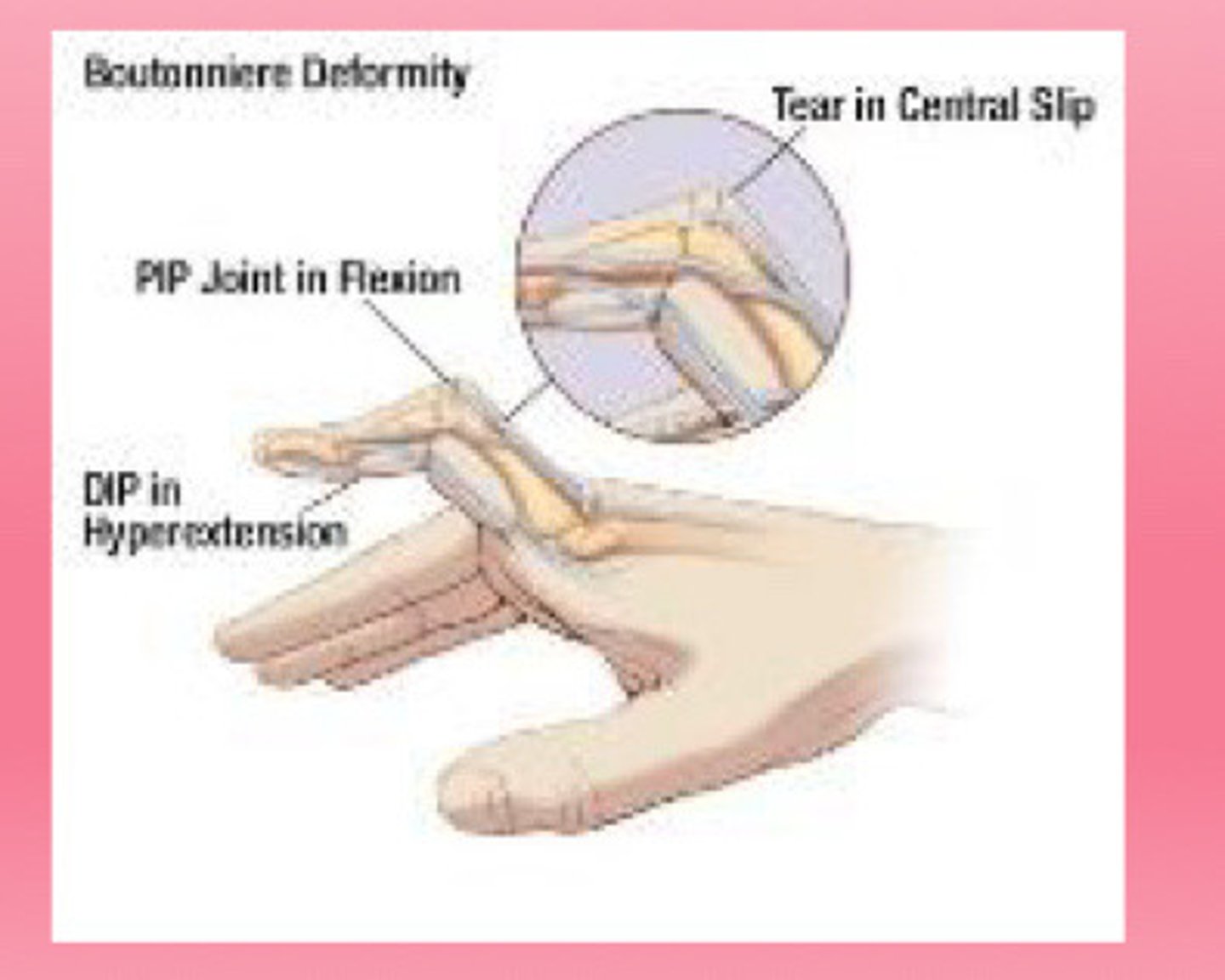
What is a swan neck deformity?
Hyperextension of the PIP joint + flexion of the DIP joint.
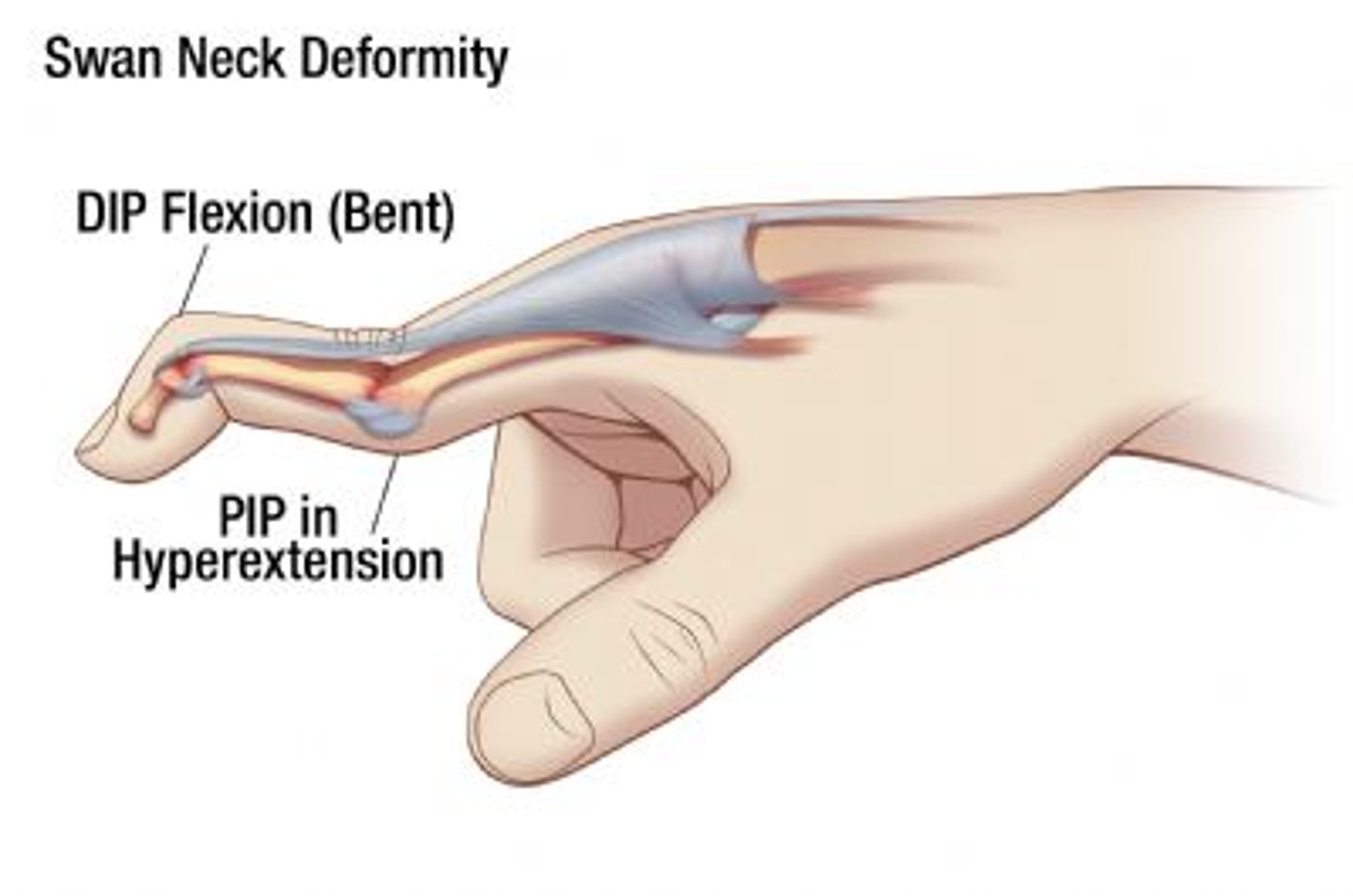
What are Heberden nodes, and which condition are they associated with?
Bony overgrowths on DIP joints; associated with osteoarthritis
What is tenosynovitis?
Painful extension of a finger due to infection of flexor tendon sheaths.
What does thenar atrophy indicate?
Carpal tunnel syndrome (median nerve compression).
What are signs of acute gouty arthritis in the foot?
Tender, painful, red, hot, swollen MTP joint of great toe.
What is pes planus?
Flat feet, no arch—may cause pain and swelling.
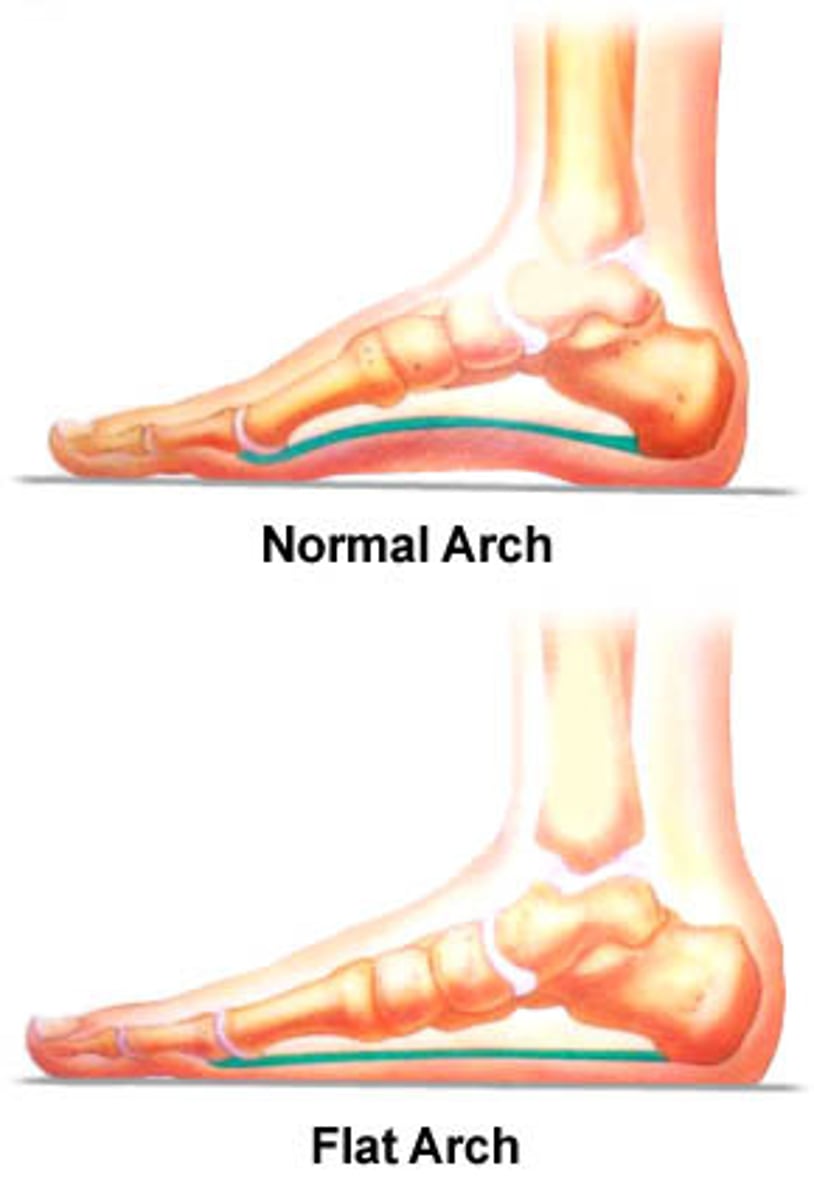
What is a callus?
Nonpainful thickened skin at pressure points.
What is hallux valgus?
Great toe deviates laterally; may overlap second toe; bunion may form.
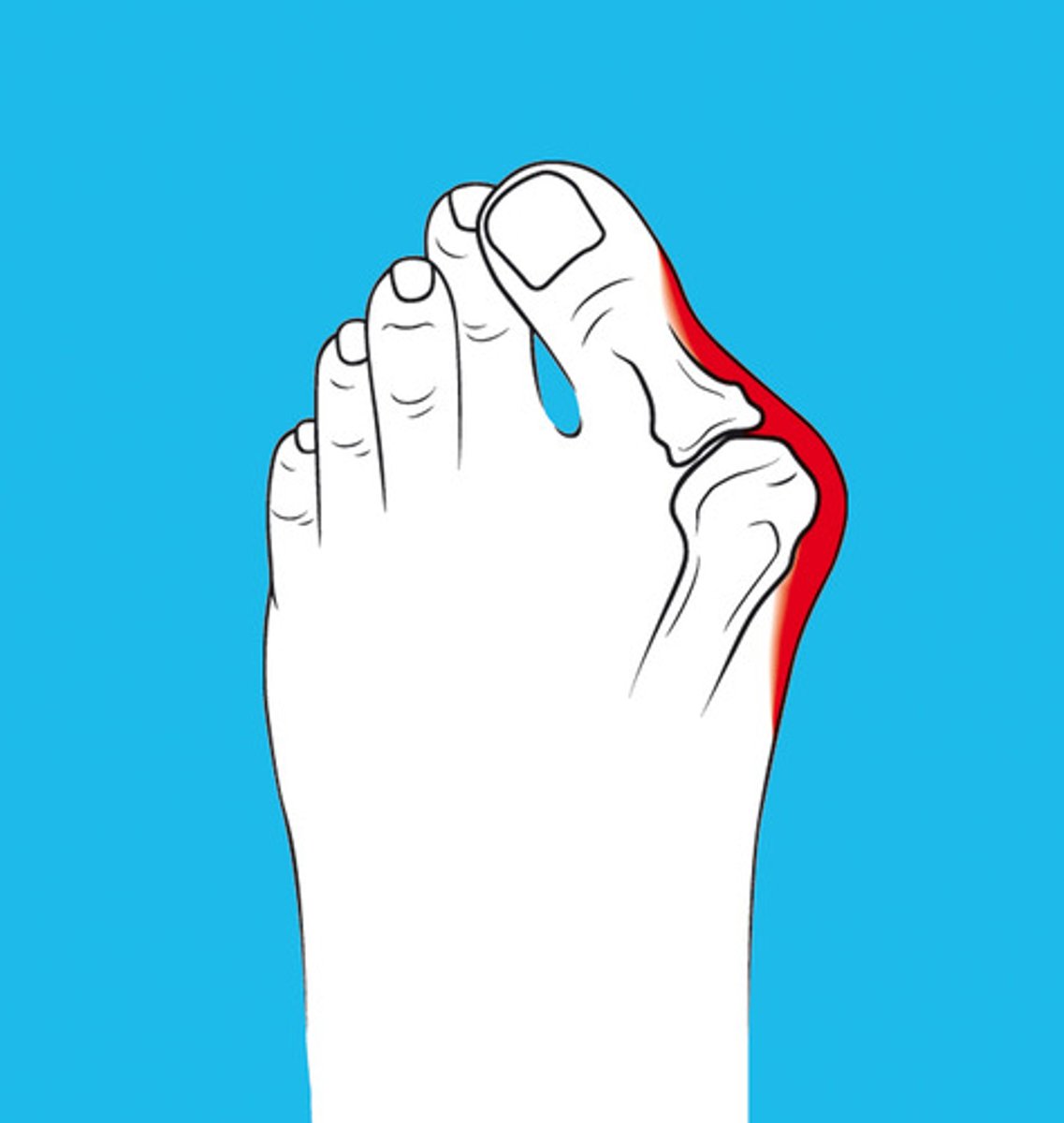
What is a corn?
Painful thickened skin over bony prominences with a translucent core
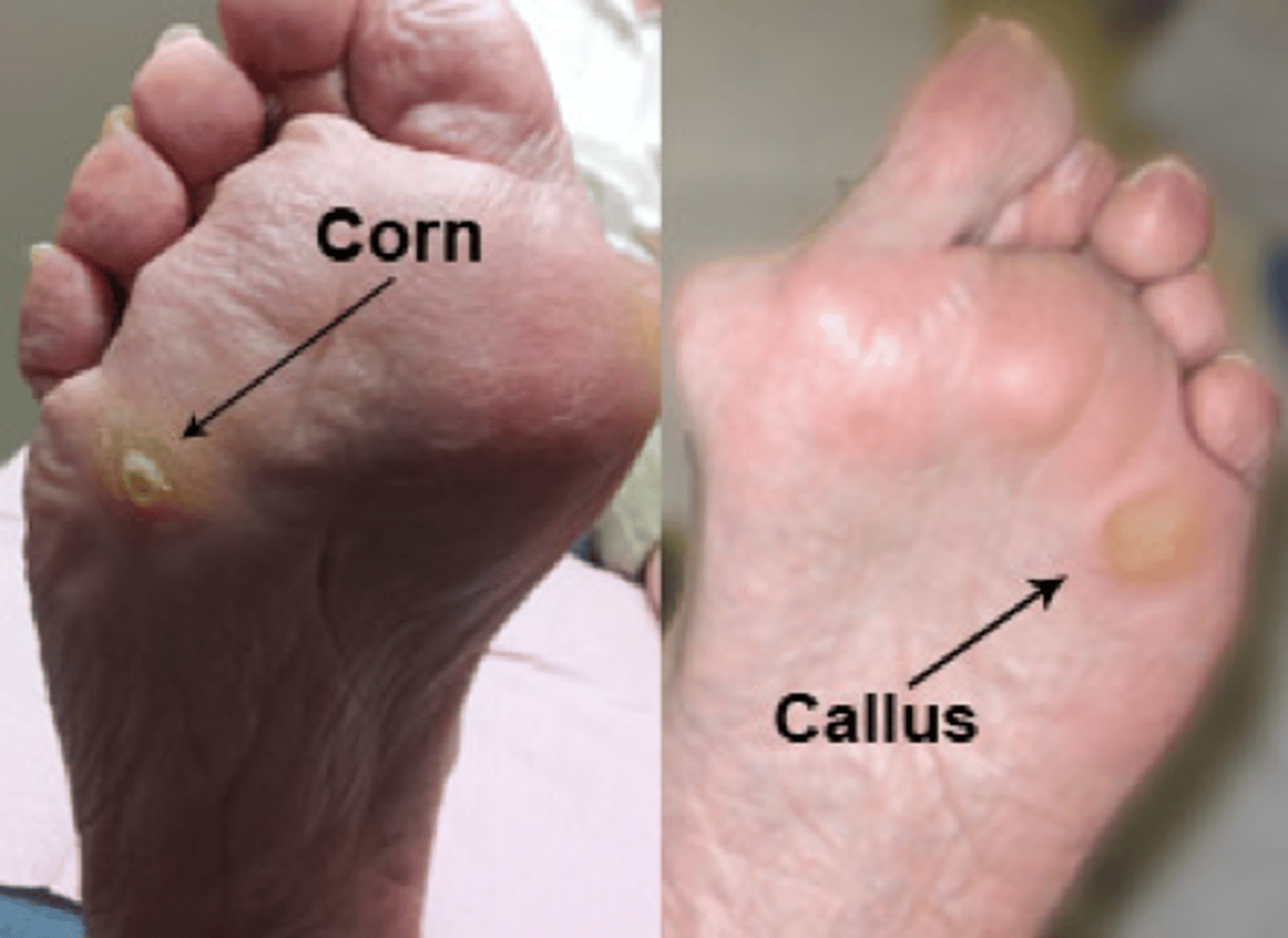
What is hammer toe?
Hyperextension at MTP + flexion at PIP joint (usually second toe)
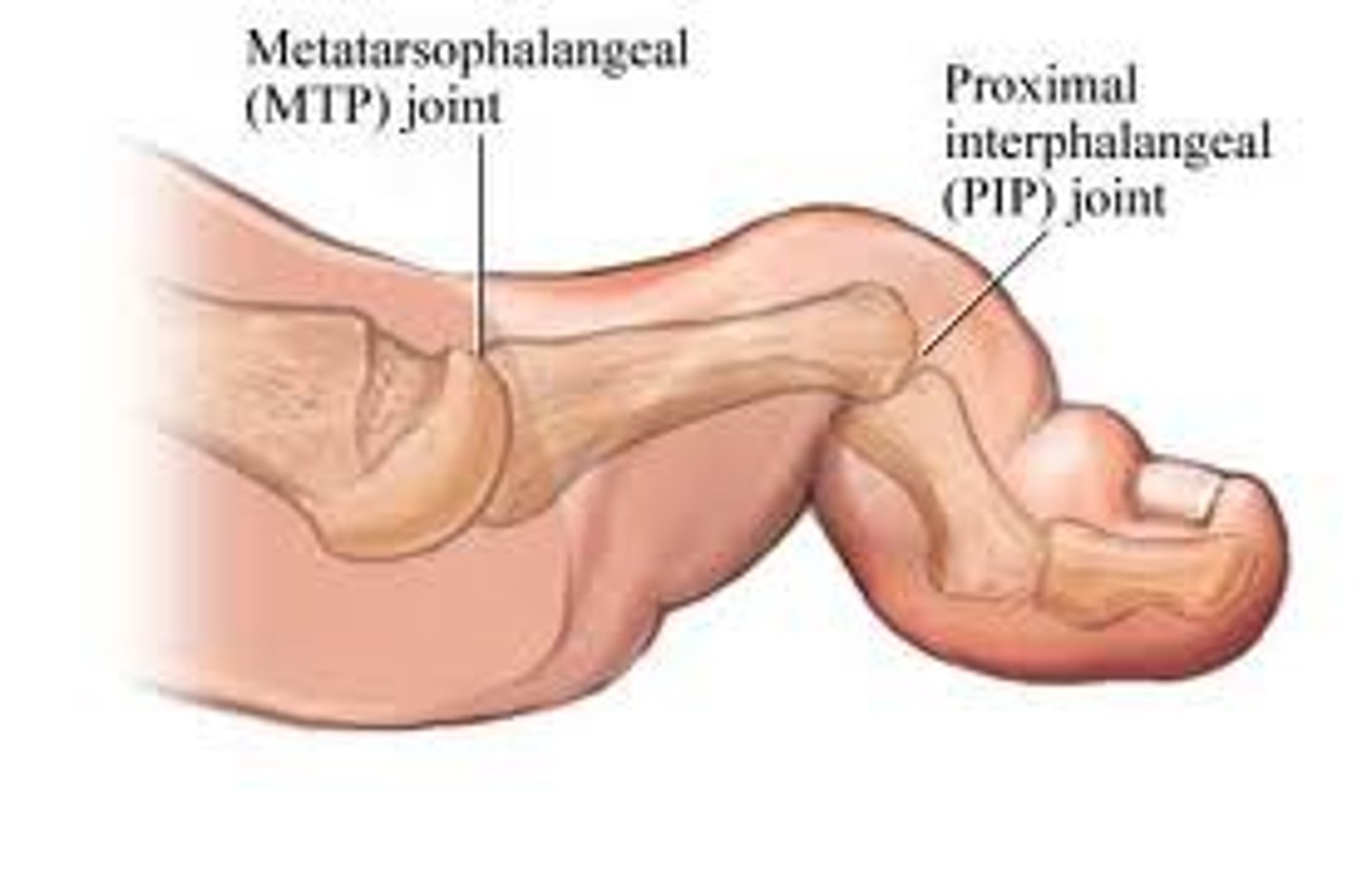
What are plantar warts?
Viral warts on the sole; painful; appear as dark spots under a callus
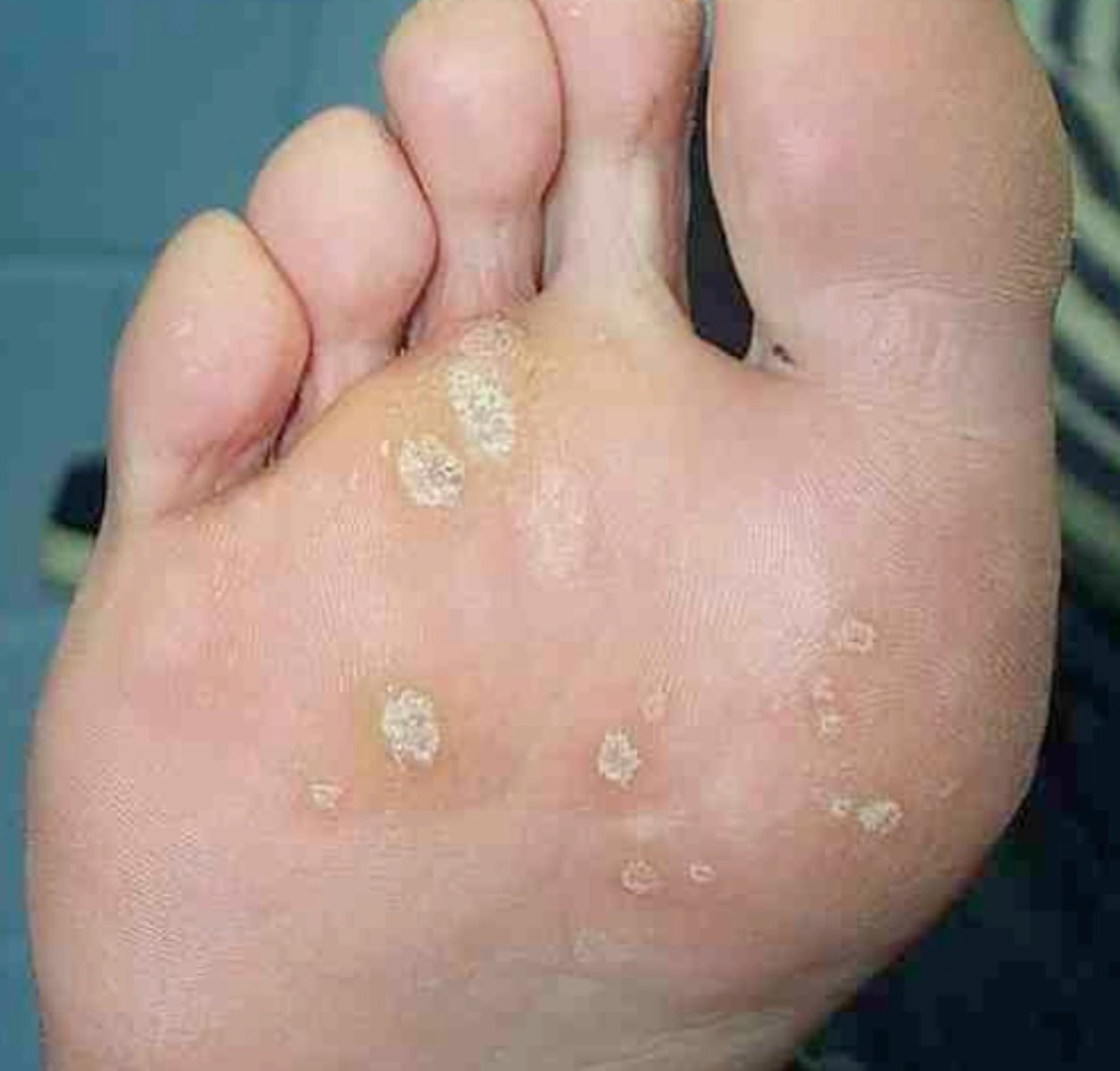
Why are older adults at higher risk for fractures?
Bone density decreases with age; increased risk in osteomalacia or osteoporosis.
What condition in older adults may be misdiagnosed as arthritis?
Joint-stiffening conditions.
Why is osteoporosis more common with aging?
Increased bone resorption
Decreased calcium absorption
Decreased osteoblast production
Why do older clients have increased fall risk?
Impaired sense of position in space.
Why do older adults have slower movement and decreased muscle strength?
Age-related muscle fiber loss, decreased elasticity of tendons, and joint capsule calcification.
What spinal curvature is common in older adults?
Exaggerated thoracic curve (kyphosis)